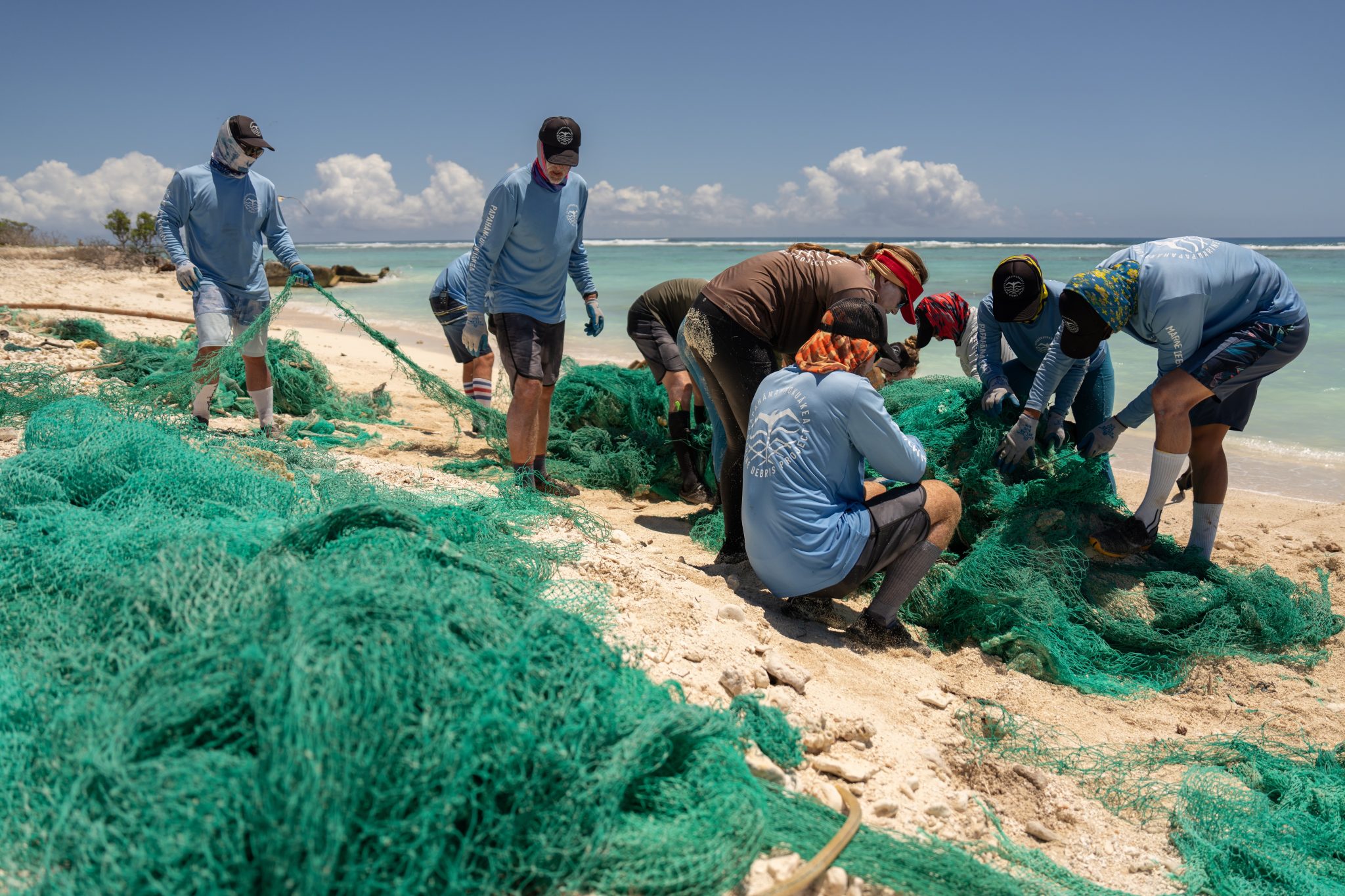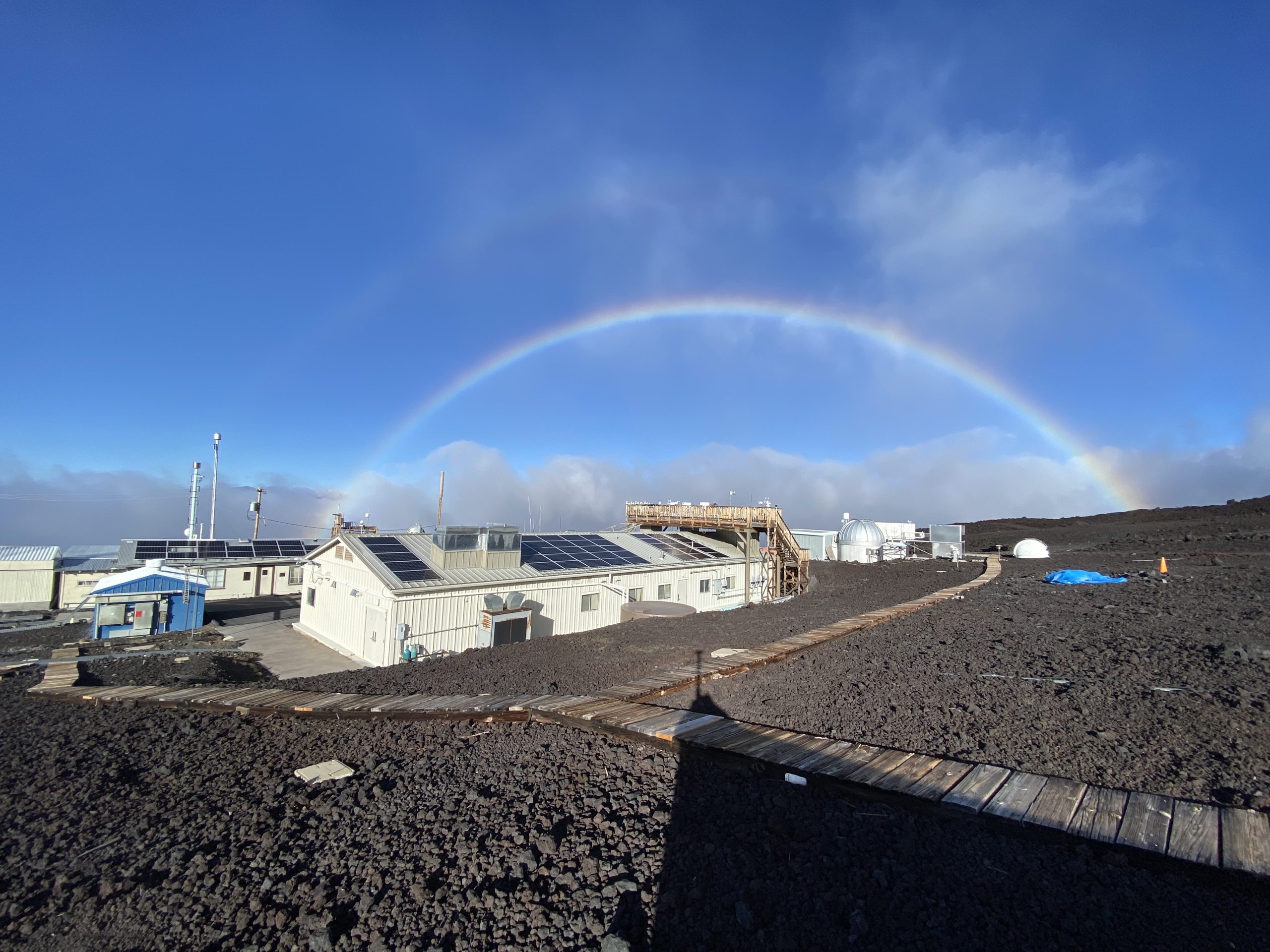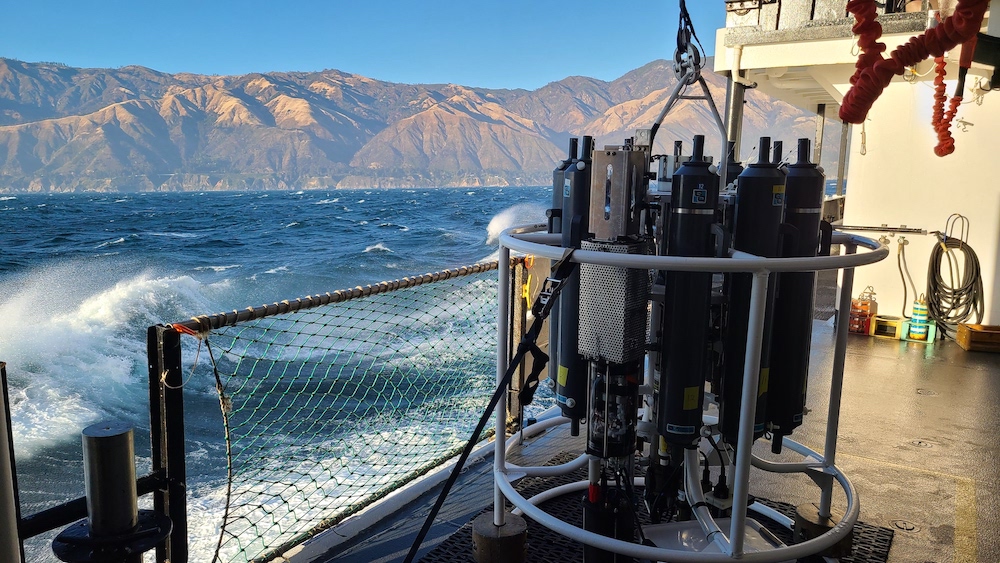Around the world, from the surface waters to the seafloor, our oceans are warming, and we are beginning to adapt to and prepare for this change in our climate. Marine heatwaves occur when sea surface temperatures exceed 90% of typical regional temperatures, factoring in seasonal fluctuations. Scientists compare present conditions to a baseline average from 1991 to 2020, accounting for global warming trends. Marine heatwaves can endure for varying periods, from days to years, affecting not only surface waters but also the bottom of the ocean.
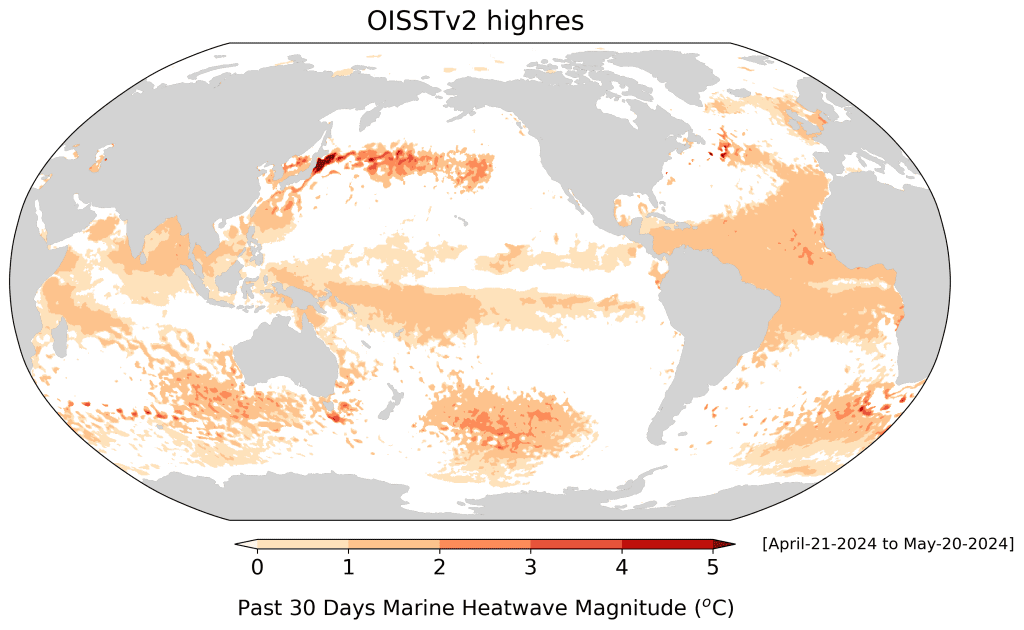
What are some of the impacts of marine heatwaves?
Extreme warm ocean temperatures can have profound effects on marine ecosystems, weather patterns, and economic activities. Marine heatwaves stress marine life, leading to mass die-offs of fish, marine mammals, and seabirds, and coral bleaching. They can also trigger harmful algal blooms and intensified hurricanes. The severity of these impacts varies by region and depends on factors such as the duration, timing, and depth of temperature anomalies.
Case Study: The Blob (2013-2016)
A notable instance of a marine heatwave occurred in the northeast Pacific Ocean from 2013 to 2016 and was known as “the Blob.” Stretching from Baja California to the Gulf of Alaska, this warm event significantly impacted ecosystems and livelihoods along the coast. Early ecological changes included shifts in salmon migration patterns and sardine spawning locations, leading to increased sea lion strandings. Additionally, drought conditions combined with ocean warming resulted in the loss of 95% of highly endangered Sacramento River winter run Chinook salmon eggs.
As the warm temperatures rose and persisted, krill and forage fish populations declined, causing humpback whales to feed on anchovies closer to shore. As the whales followed their prey populations, there was an usually high number of whale entanglements from crab traps and fishing gear in the area. Harmful algal toxins were abundant enough to close recreational razor clam harvest in Oregon and Washington and a large portion of Washington’s Dungeness crab fisheries. Although normal conditions eventually returned, the damage to fisheries such as Fraser River sockeye, coho salmon, sardine, red sea urchin, Dungeness crab, and cod had already been done.
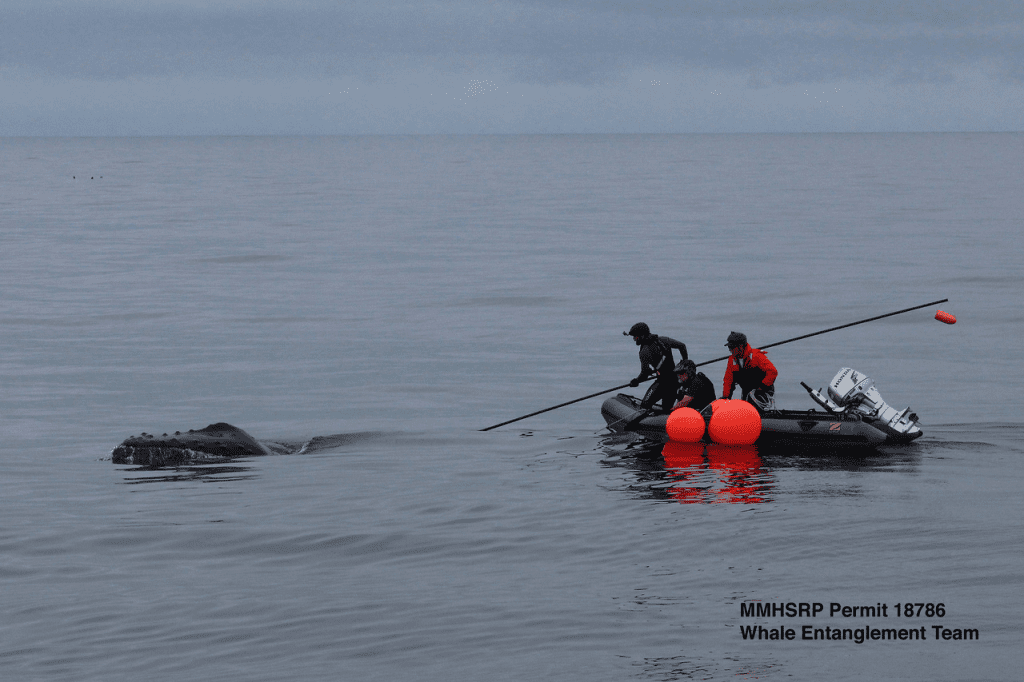

How are marine heatwaves studied and predicted?
Collaboration is essential in the effective study of marine heatwaves. The National Weather Service’s National Data Buoy Center collects and distributes real-time, quality-controlled marine observations from 1,300 weather observing stations. NOAA’s Pacific Marine Environmental Lab and Physical Sciences Laboratory monitor ocean heat conditions and develop forecasts using advanced models and data collected from stations like Ocean Weather Station Papa. This station serves as a crucial research outpost, providing comprehensive long term in-situ observations offshore in the Gulf of Alaska. Station Papa is a unique multi-disciplinary natural laboratory that studies marine heatwaves by using physical (temperature, salinity), biogeochemical (carbon dioxide exchange, pH), and biological (acoustic whale calls, shipboard bottle samples) data. By combining these observations with satellite data and analytical techniques like statistical modeling and machine learning, researchers can identify marine heatwave patterns, trends, and consequences. Physical Science Laboratory’s Marine Heatwave Forecast Monthly Report uses findings such as the data collected by Station Papa to inform management decisions for climate adaptation and community resilience.
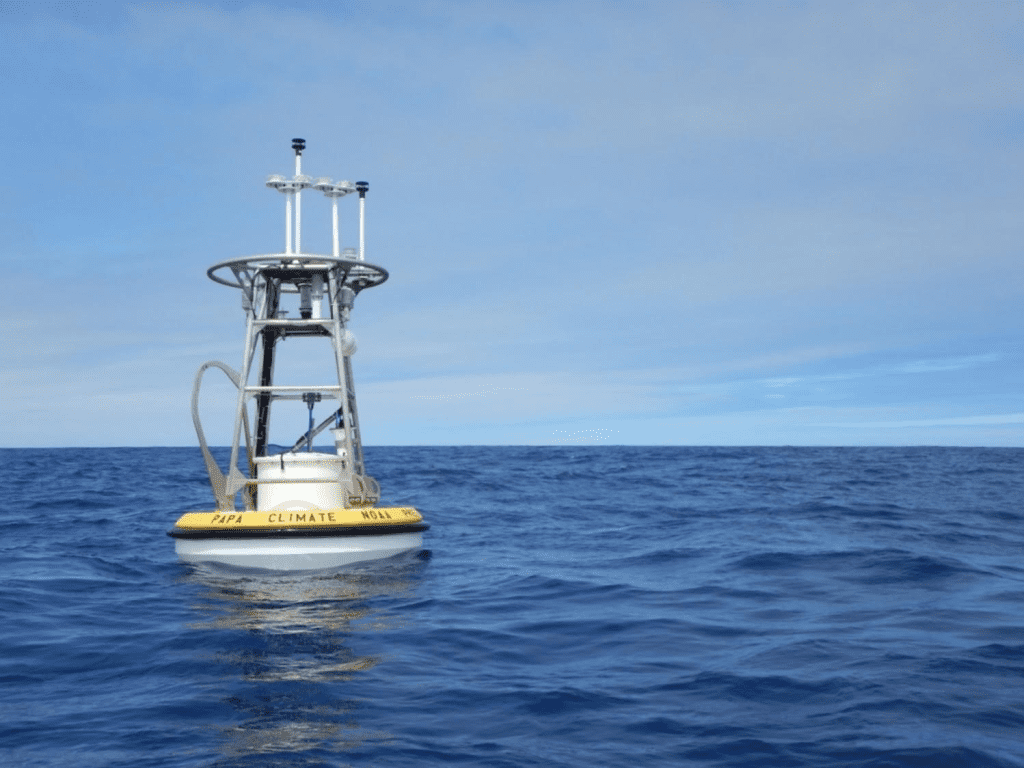

What are the future directions of marine heatwave research?
With our changing global climate, marine heatwaves are increasing in size, duration, and frequency, making ongoing research essential. NOAA remains at the forefront of expanding observational capabilities and interdisciplinary collaborations to understand and predict marine heatwaves worldwide. This concerted effort aims to enhance our ability to make informed management decisions and enhance community resilience.


